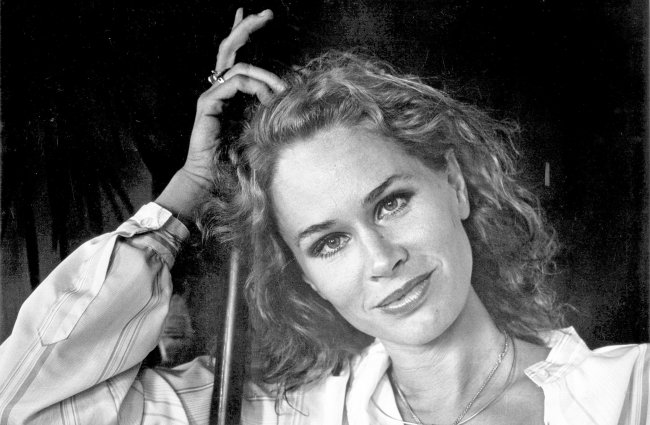Though actress Karen Black never stopped working, news of her passing last week at age 74 sent me back to the 1970s. That era ― a transformative cultural moment for women in general ― had the films I remember the actress in most.
It actually starts on the eve of the decade with 1969’s “Easy Rider,” the movie that put Black on Hollywood’s radar. (She had already made an imprint on stage.) It’s hard to forget her portrayal of a leggy prostitute with a long tangle of brown curls taking an LSD-fueled trip with Dennis Hopper’s character during Mardi Gras in that seminal film.

In her working girl, Black fused the struggle between an emerging sense of sexual liberation for women and the gritty realities of the world’s oldest profession. In one way or another it was a struggle that played out in many of her best roles. She was both free and not.
Much has been made in recent days about the kind of characters she played ― strong women with attitude. But what I see is the sexuality Black brought to the screen in her most compelling work.
Black was a seductress for the modern age ― and quintessentially so. In one film after another, you see her standing her own ground ― and yet not standing alone.
She tended to be found in the company of the anti-heroes of the times, the kind of men who wanted their lovers to be willful and wild, but still at their beck and call. A reflection of the social conundrum of the day, certainly for a generation of college kids working their way through the minefield of gender politics.
The actress had a great beauty, but unconventional, not in the Hollywood mold. It set her apart. There was a kind of craziness in her eyes that suggested an unpredictable nature, the type to change her mind at the worst possible moment. That sense of the uncertain made her exciting to watch.
The characters themselves cross socio-economic lines. She could exude working-class grit or Madison Avenue sophistication. But the sensuality was always there.
She was born with that lush pout ― long before the look became popular and years before women would seek out doctors and pay for the plump. Go back to watch director John Schlesinger’s 1975 gem “The Day of the Locust” for her scorned ingenue, lips a fire-engine red.
And her cat eyes ― green flecked with gold. Makeup artists didn’t need to enhance them, but they did, lashes heavied with mascara. They were knowing, old-soul eyes ― telegraphing empathy for a younger man in 1978’s “In Praise of Older Women” and irritation with her boyfriend played by Jack Nicholson in 1970’s “Five Easy Pieces” with equal ease.
In that Bob Rafelson film, everyone remembers Nicholson’s character’s face-off with the waitress over a chicken-salad sandwich. What stays with me is Black as his pregnant girlfriend, Rayette, looking out the diner window with a thousand-yard stare. The performance would earn the actress her only Oscar nomination.
Of course it helped that Black was a believable sex symbol. To put it bluntly, she had a body made for the lingerie and the plunging necklines movie costumers so often put her in. And the roles called for it. In “Portnoy’s Complaint” she was “The Monkey,” Mary Jane Reid, the fling Portnoy remembered most specifically for her sexual agility.
In Nicholson’s first credited directing job, 1971’s “Drive, He Said,” Black portrays the sexy young wife of a professor who finds herself torn by her tryst with the university’s basketball star, with a great deal of sass. Even in Robert Altman’s “Nashville,” when her singer Connie White is asked to step in for the ailing superstar, Barbara Jean, it’s her sexuality as much as her singing that has the bigger star worried.
The actress would, of course, play many other types of women over a very long career ― 194 credits in all. The horror genre, in particular, came to adore her. Probably the most memorable of the fright bunch is director Rob Zombie’s 2003 film, “House of 1000 Corpses,” which featured her as a truly frightening matriarch with a very malevolent secret.
But the best of Karen Black’s work is from another time. When sexuality on screen was going through a metamorphosis, she was one of cinema’s beautiful butterflies.
By Betsy Sharkey
(Los Angeles Times)
(MCT Information Services)


















![[Today’s K-pop] Treasure to publish magazine for debut anniversary](http://res.heraldm.com/phpwas/restmb_idxmake.php?idx=642&simg=/content/image/2024/07/26/20240726050551_0.jpg&u=)